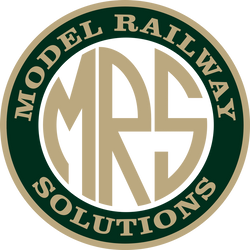
LOAD & TARE Until 1937, this appeared in script in the form "10 Tons. Tare 5-16" etc, usually at the bottom right-hand of the side. From 1937 the load was in block figures, bottom left, below GW and above the number (e.g. at 10T) with the tare in figures on ("Tare" omitted) in script at bottom right. CODES AND DEPOTS Brake van depots were on the third plank down. Wagon codes were normally on the bottom left of the side and over the number, but low-sided vehicles (e.g. coral, carfit etc.) mostly had them midway along. or on the solebars or lower framing. NUMBERING. Usually bottom left, but bottom right on most brown vehicles post 1937. XP bottom right above number or tare. Some large vans (e.g. Monster) had number to left of code, bottom centre. On some vans pre- about 1937 and other vehicles pre- 1920, numbers were repeated on the ends. SPECIAL INSTRUCTIONS These appeared where convenient on the vehicle. The circle is for Steam Banana. Small, L, M and S are for cattle wagons. "Not common user" was low down at the right hand side. There are many variations of insignia placing - good photos of most types of GWR goods stock can be found in published books. Please note that all dates are approximate painting dates. Dates in service could be many years later. The white insignia is for normal grey freight stock, the yellow being for brown vehicles, i.e., those which normally appeared in passenger trains. Red insignia is for white-painted refrigerator meat and 'Tevans'. COMPANY IDENTITY. G.W.R was used in the period 1880's to 1904. From 1903-4 the large 25" GW was used where it would fit, being replaced in 1920 by the 16" GW. 12" GW is for crocodiles 3" for carriage trucks and 4?? and 8" for other low sided vehicles. Brown vehicles (not low sided) had the round monogram from 1934 and the small 4" from about 1943. Grey stock (not low sided) kept the 16" GW until 1937, then had the 4" size. Low sided stock kept the intermediate sizes of GW throughout.
